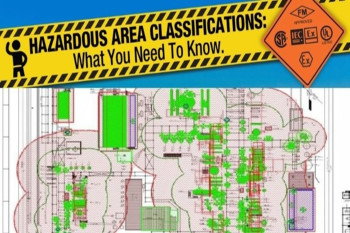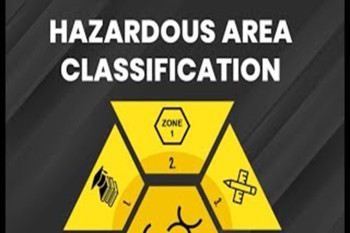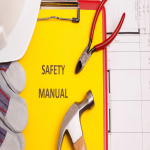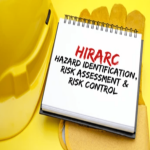METHODOLOGY FOR ROOT CAUSE ANALYSIS (RCA) STUDY
1. INTRODUCTION
Root Cause Analysis (RCA) is a structured methodology used to identify the underlying causes of problems, incidents, or failures. It aims to go beyond addressing immediate symptoms and instead seeks to understand the fundamental reasons why an issue occurred.
The primary goal of RCA is to prevent the recurrence of problems by addressing their root causes. It helps organisations improve processes, systems, and performance by understanding why things go wrong.
2. OBJECTIVE OF RCA
To identify and address the underlying causes of problems or incidents,
aiming to prevent their recurrence,
drive continuous improvement,
reduce risks,
lower costs,
enhance decision-making, and
mprove customer satisfaction.
3. RCA METHODOLOGY
Data Collection: Gathering relevant information and evidence related to the problem or incident, which serves as the basis for analysis.
Data Review: Reviewing collected data to understand the sequence of events, contributing factors, and initial insights into the problem.
Meeting with Client for Confirming the Type of RCA: Depending on the nature and complexity of the problem, it's important to align with the client or stakeholders on the type of RCA methodology to be used. This could involve discussing options such as the 5 Whys, Fishbone Diagram, Fault Tree Analysis, or other relevant techniques.
Analysis: Once the type of RCA methodology is confirmed, the analysis phase begins. This involves applying the chosen methodology to delve deeper into the underlying causes of the problem. Through systematic questioning, mapping causal relationships, or other analytical approaches, the aim is to identify the root cause(s) driving the issue.
Draft Report Preparation: Once the analysis is complete, a draft report is prepared to document the findings of the RCA process. The report typically includes an overview of the problem, a summary of the data collected and reviewed, the analysis methodology used, findings regarding causal factors and root causes, and initial recommendations for corrective actions.
Comments Incorporation along with CRS: The draft report is then circulated for review and feedback. Comments and suggestions are incorporated into the report, and a Comment Resolution Sheet (CRS) is shared.
Final Report: Based on the feedback received and any revisions made, a final report is prepared.
4. RCA PROCESS
The RCA process involves the following steps:
Realize the Problem: This initial step involves recognizing that a problem exists and needs to be addressed. It's about acknowledging the existence of an issue, whether it's a recurring problem, a one-time incident, or a potential risk.
Gather Data: Once the problem is recognized, the next step is to collect relevant data and information related to the problem. This data could include incident reports, logs, records, observations, interviews, and any other sources that provide insights into the problem.
Determine Possible Causal Factors: With data in hand, the focus shifts to identifying the factors or events that may have contributed to the problem. This step involves brainstorming and exploring various possibilities to understand the immediate causes or triggers of the problem.
Identify the Root Cause: After determining possible causal factors, the goal is to identify the root cause or causes underlying the problem. The root cause is the fundamental reason why the problem occurred, and it may be deeper than the immediate causes identified earlier.
Recommend and Implement Solutions: Once the root cause is identified, the next step is to develop and recommend practical solutions to address it. These solutions should be aimed at preventing the problem from recurring in the future. After recommendations are made, they need to be implemented effectively, with clear responsibilities assigned and necessary resources allocated.
5. VARIOUS METHOD OF ROOT CAUSE ANALYSIS
The Ishikawa Fishbone Diagram (IFD)
Pareto Chart
5 Whys
Failure Mode And Effects Analysis (FMEA)
Affinity Diagram
Fault Tree Analysis (FTA)
6. STEPS FOR 5 WHYS
This method involves asking "why" repeatedly (typically five times) to drill down to the fundamental cause of a problem. By identifying successive layers of causes, it aims to uncover the root cause.
Define the Problem: Start by clearly defining the problem or the undesired outcome you want to address.
Ask Why: Ask why the problem occurred. Look beyond the immediate cause and seek the underlying reason.
Repeat: For each answer generated, ask "why" again to uncover deeper causes. Aim for at least five iterations to reach the root cause.
Analyse and Act: Analyse the root cause(s) identified and determine appropriate corrective actions to address them.
Implement Solutions: Implement the solutions and monitor their effectiveness. If necessary, iterate the process to ensure sustained improvement.
Example: Problem: Production line stopped working.
Why did the production line stop? - Because a machine malfunctioned.
Why did the machine malfunction? - Because it overheated.
Why did the machine overheat? - Because the cooling system failed.
Why did the cooling system fail? - Because the coolant level was low.
Why was the coolant level low? - Because regular maintenance checks were not conducted.
Root Cause: Lack of regular maintenance checks led to low coolant levels, causing the cooling system to fail and the production line to stop.
7. PROJECT DELIVERABLES
Table 1. RCA
DISCLAIMER
HSE Risk Management Services Private Limited accepts no liability or responsibility whatsoever for it in respect of any use of or reliance upon this Methodology by any third party.
Copying this Methodology without the permission of HSE Risk Management Services Private Limited is not permitted.










